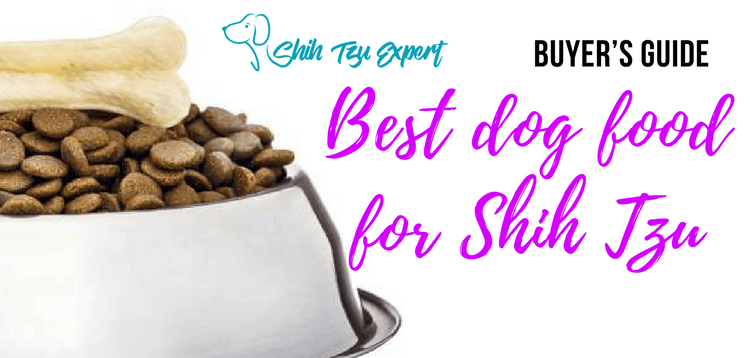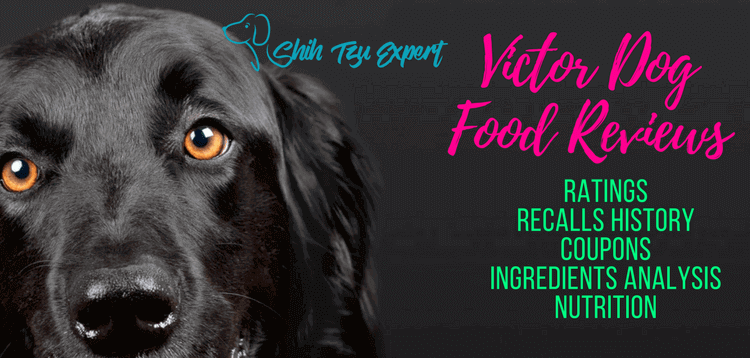As any dog owner will tell you, caring for and sharing a life with your furry friend is one of the most rewarding parts of life. However, at times it can be as overwhelming as having a child. Here are some Home Care Tips for New Dog Owners to make it easier for you and your dog…
The staggering amount of information out there, often contradictory, related to pet ownership can often leave one disheartened and confused. So let’s keep it simple! Following these basic tips will keep your pet (and home) happy, healthy, and in harmony.
Your Dog Lives in Your Home, Not the Other Way Around
However, it’s important to make clear that you are the master of the domain and the things in it. This will keep your pup safe, and your home undamaged.
From the time my dog was a puppy, I made it clear that she was to chew only on her toys. She stole a shoe from my closet one time, and one time only, as I firmly told her the shoe was mine (by holding it to my chest and telling her “mine”), and replacing the space between her legs where she held it with one of her own toys.
She happily began chewing on her toy, and never took one of mine again. Replacing is a great tactic to use when puppies chew on couches, railings, anything they can get their teeth on – it’s important to have many acceptable chew toys handy so you can give them something fun, rather than just taking something away.
I was fortunate enough to have a very trainable puppy – her dog personality would be considered “happy-go-lucky pleaser”. But the distinction I made between my things and her things was also a very important one to make for her safety and happiness.
There are certain items in the house that belong to only me, and should not be touched by her – and that distinction made us both more comfortable quickly. Puppies need boundaries, and it is as important to provide those boundaries for them as it is for us (and our shoes).
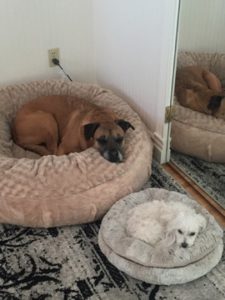
Let Your Dog Be a Dog
As much as you might see your dog as your child, he or she is in fact another species with different drives and different methods of communication. Nola probably filters out about 98% of the words that come out of my mouth.
I may think she understands every word I say, and I often believe she can read my mind; but the truth is, dogs must filter out a lot of what we humans say, or else they would be overloaded with information that’s meaningless to them.
I have probably taught my dog about 200 words. The number of words I use each day is probably closer to about 10,000. She doesn’t need to know exactly what I mean when I say, “who’s the prettiest girl in town, monkey butt?”
She knows I’m talking to her because sometimes I call her monkey butt, and she knows we’re on a walk, which is fun for her, and she knows I’m saying something positive and will prance happily and relaxed because of it. But she doesn’t need to worry about exactly what I’m saying unless it’s one of the commands for which she is trained.
Also in the vein of your dog being a dog, understand that the information he or she obtains simply by walking out the door with you, smelling trees, looking down the sidewalk, is very important to the dog’s experience.
They do not want to be carried like babies most of the time, and they need the autonomy of walking on their own feet, feeling the ground, and learning all they can in the way they instinctively learn.
Know Your Dog’s Stress Signals
Like all of us, dogs visibly show when they are stressed – and different dogs often have different signals. Nola is a yawner, tongue flicker, and a shaker. If she yawns (and I know she’s not tired), and that’s coupled with a tongue-flick and then a shake-off, I know she’s stressed and I should change the situation for her.
She doesn’t need to tell me, “this big scary dog who keeps rudely getting in my face while I’m just trying to play with the ball with you, is stressing me out.” She displays her own stress signals, and I politely ask the other dog owner to get his dog to give us more space.
Training and Socializing Are Very Important
The number of trainers, training techniques, and classes out there can be daunting. But the most important thing to do before choosing one is to decide what kind of dog owner you want to be, your dog’s unique personality traits, and what kind of dog you want to raise.
When I decided to adopt my first dog on my own, I knew that I wanted a dog who would be cool doing everything I liked doing – going to restaurants, traveling (in cars, vans, trains, planes), seriously exercising once per day, and being calm and gentle and happy when just chilling at home.
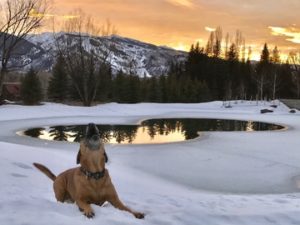
Remaining Calm is Key
This sounds easier than it is, but is of paramount importance. Like babies, puppies need calm. If you have a calm and stress-free home, your dog’s energy will reflect that. That means not freaking out when she has an accident on your favorite rug (odor- and stain-removing cleaning products will become a staple on your shopping list), not having violent screaming matches with your partner, and not overreacting when your pup does something you don’t like.
The word “Nola” has become my dog’s favorite word – and is generally greeted with her looking at me, listening attentively, coming closer to me, and wagging her tail. This can be accomplished early on with simple training, positively reinforcing the behavior you want when they hear their name each time they perform that behavior.
Find a Vet You Can Trust – and Stay Informed
When I moved with Nola from New York to Colorado, I was pleasantly surprised that many of the vaccinations that pets need in one state are not necessary in the other. I’m not talking about rabies, as most states require those vaccinations by law.
But heartworm, lime preventatives, and other vaccines are not necessary where I live now because of climate, wildlife, and other differences. I choose to vaccinate as little as possible, and perform “titer” tests on my dogs in lieu of keeping to the recommended vaccination schedules; titer tests measure the amount of vaccine still remaining in the dog’s blood, and can render an additional dose of the vaccine unnecessary. The costs do add up, so you will have to decide what is best for you and your family.
Your et’s office will usually also have wall-mounted signs that as a dog owner, you will probably memorize. These will help you steer clear of any foods that might be “poisonous” to your dog if consumed in large quantities. Many of these off-limit foods can provoke an autoimmune response and the situation can become very dangerous for your dog. But easily avoidable!
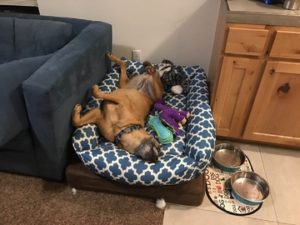
Like Humans, They Will Evolve as They Age
As Nola gets older, I find myself thinking more and more of my grandfather when I see her interacting with other dogs. Whereas younger adults might sometimes keep their mouths shut in some situations, not always speaking their minds, erring on the side of politeness, my grandfather does not let issues lie, does not worry about being polite if he has something to say, and mainly does more of whatever he’d like to do in most situations.
Her age has also meant I have gotten to know her better, and am able to avoid situations that I know she will not like, or how to shield her more from dogs that I know annoy her.
The new addition to your family is sure to bring you joy, fun, and fulfillment. Treat them with love and respect, and they will return so much more.

![12 Best Dog Foods for Toy Breeds [Buyer's Guide] 12 Best Dog Foods for Toy Breeds [Buyer's Guide]](https://shihtzuexpert.com/wp-content/uploads/2019/05/3-5.jpg)
